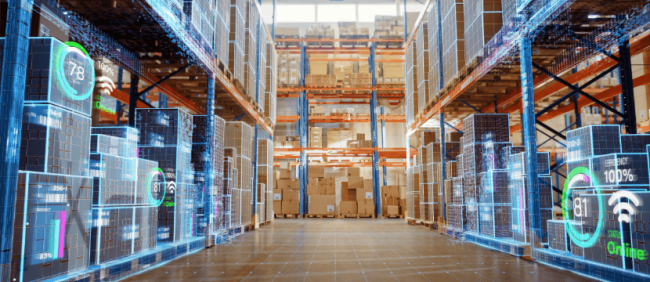As supply chains become increasingly complex, businesses look for solutions to understand and optimize their supply chains to ease operations and productivity. Big names in the e-commerce industry have disrupted the market through supply chain management, logistics, and operations by infusing every aspect with big data analytics, automation, and other digital technologies.
The COVID-19 pandemic made many companies realize that they were not ready to keep up with disruptions and rapid changes, especially in their supply chain operations. These supply chains are often the crux of any product-driven organization, but if they aren’t handled properly, the breakdown of basic services could take root and eventually throw the entire business into chaos.
Hence the pandemic taught us to expect the unexpected, prioritize risk management, and create future-proof strategies for the supply chain. As a result, the changes in the supply chain are happening faster than anticipated, and companies are striving to implement earlier deemed far-fetched predictions sooner to reap the benefits in time.
Here the question arises, what’s most critical when preparing your supply chain for the future? The answer is data analytics. So let’s understand why and how.
CPG Analytics and Supply Chain Management
Consumer packaged goods or CPG is a data-driven industry. While it’s easy to collect information about your products, such as where they’re sold and how many units are moving, understanding exactly how that information applies to each product on a store shelf and using it to make even more informed decisions can be challenging.
CPG data analytics helps retailers turn their data collected from various sources into actionable information. Major sources are CPG sales and marketing databases and other third-party sources.
Fortunately, you can capture more of your market share by taking advantage of CPG data analytics with the right tools in place.
CPG analytics can help a company determine where its strength lies. With categories such as sales data, action data, and observational data available from CPG analytics, any brand can now divide the data up in various ways to reflect the demographics it appeals to or reveal the way consumers interact with your merchandise.
A future-proofed supply chain incorporates some significant characteristics such as resilience and agility, and digital technologies play a critical role in the same.
Digital transformation enables every retail and CPG company to upgrade and modernize its supply chain by shifting to a data-driven model. Because of this, CPG data analytics has led to an equally significant shift in how the supply chain and transportation are optimized.
Benefits of Using CPG Data Analytics for SCM
Big data is insignificant unless utilized; no inventory management system can be future-proof without efficient optimization. As a result, organizations can leverage digital technologies such as CPG analytics to enable end-to-end visibility, dynamic operations, and process integration to future-proof SCM.
A data-driven supply chain can use data insights to understand consumer behavior and predict consumer needs to create a competitive advantage. The shrinking cost of connected devices and the proliferation of big data analytics offers vast opportunities to improve consumer products.
With the help of CPG data analytics, businesses can adapt to the ever-changing world of retail and deliver products to customers faster. In fact, with the right approach, retailers can unify their disparate systems under a single point of control. For example, built-in CPG data analytics in modern procurement systems can analyze hundreds of thousands of data points from different sources to provide decision guidance far more nuanced than humans are capable of.
This helps increase efficiencies, improve agility and create a more “consumerized” experience for customers, partners, and employees. Ultimately, the end-to-end visibility of an optimized supply chain diminishes risk and maximizes service levels while enabling massive cost reduction. In addition, the use of CPG data analytics helps to increase supply chain efficiency and improve performance.
The key to optimizing the supply chain is considering the big picture, from start to finish, rather than focusing on refining each disparate part. Supply chain optimization balances the overall operation, making all the functions work together for better efficiency.
These and other dramatic changes in retail and CPG supply chains may be seen as an existential threat, but they can also be an important opportunity. Any retailer or CPG company can start to apply the same technologies and methodologies at whatever scale makes sense for the organization.
Conclusion
CPG data analytics streamlines complex supply chain structures and operations, enabling a smooth flow of information and improving efficiency, eliminating unnecessary links, and reducing expenditure. It accurately describes the ongoing operations in multiple retail locations and ensures that supply chain processes are delivering on their promised results.
As an additional benefit, it can empower businesses to make informed decisions that can lead to better allocation of resources and ensure that the processes continue through the optimal delivery of its objectives.




